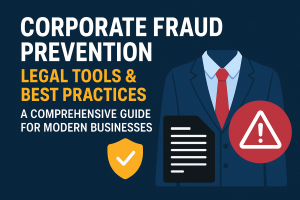Unauthorized construction and encroachment on land or property can cause serious disputes, financial loss, and frustration for property owners. Thankfully, Indian civil law provides a variety of remedies to restore rights, remove illegal structures, and secure compensation. Below is a comprehensive guide on navigating the legal landscape to challenge unauthorized construction or encroachment.
- Understanding Unauthorized Construction vs. Encroachment
- Unauthorized Construction: Erection or alteration of a building without necessary municipal or development authority permissions (e.g., violating sanctioned plans, Floor Space Index (FSI), or building bylaws).
- Encroachment: Physical intrusion onto another’s property—partial or full—by constructing a wall, shed, hoarding, or even planting permanent fixtures.
- Both acts infringe upon property rights and invite legal action under the Indian Penal Code, Code of Civil Procedure, and local municipal laws.
- Key Legal Provisions
- Section 4 & 5 of Specific Relief Act, 1963
- Section 4: Injunction to prevent breach of an obligation existing in favor of the plaintiff.
- Section 5: Mandatory injunction requiring the defendant to perform an act, such as removing an encroachment.
- Order XXXIX, Rules 1 & 2 of the Civil Procedure Code (CPC)
- Temporary Injunctions: Immediate relief to maintain status quo and prevent further construction or damage.
- Section 290–291, Indian Penal Code (IPC)
- Punishment for mischief by injury to property. If encroachment amounts to willful damage, criminal proceedings can be initiated.
- Municipal and Development Control Regulations
- Local laws (e.g., Municipal Corporation Act, Urban Land Ceiling Act) impose duties on authorities to remove unauthorized structures and impose fines.
- Civil Remedies
- Suing for Injunction
- Interim Injunction
- File under Order XXXIX CPC to restrain the defendant from continuing construction or encroaching further.
- Requires establishing:
- Prima facie case (strong initial case)
- Irreparable injury if construction continues
- Balance of convenience favors the plaintiff
- Perpetual/Mandatory Injunction
- Seek a final decree under Sections 38 & 39 of the Specific Relief Act for removal of encroachments or demolition of unauthorized structures.
- Damages and Compensation
- Damages under Section 74 of the Indian Contract Act (where a contract exists) or general tort principles for trespass, to recover:
- Loss of use value (e.g., rental income)
- Cost of restoration or demolition
- Aggravated damages for willful encroachment
- Declaration of Title
- A declaration suit under Section 34, Specific Relief Act to affirm ownership and bar future encroachments or construction by the defendant.
- Criminal Proceedings
If the encroachment involves wilful mischief or damages:
- File an FIR under Section 429 IPC (mischief by killing or rendering useless property) or Section 441–447 IPC (criminal trespass).
- The police can investigate, and courts can impose fines or imprisonment, deterring future encroachments.
- Statutory Authority Intervention
- Local Municipal Body / Development Authority
- Submit a written complaint with evidence (site photos, land records) requesting direction to remove unauthorized structures.
- Authorities can issue notice and take summary action for demolition under municipal bylaws.
- Revenue Authorities (Tehsildar / District Collector)
- In the case of government land, lodge a petition for ejectment and removal.
- Procedural Roadmap
- Gather Evidence
- Title deeds, site plan, land records (Jamabandi), encroachment photographs, survey reports.
- Legal Notice
- Issue a 60-day notice demanding cessation of construction and removal of encroachments.
- File Civil Suit
- Draft plaint seeking injunction, demolition, declaration, and damages.
- Annex proof: title documents, legal notice, site photos.
- Seek Interim Relief
- Application under Order XXXIX CPC for temporary injunction and status quo order.
- Trial & Final Order
- Present oral and documentary evidence.
- Obtain the decree for removal and/or compensation.
- Execution
- If the defendant resists, file an execution petition under Order XXI CPC to get court assistance in demolition or obtaining damages.
- Practical Tips for Property Owners
- Survey Before Purchase: Commission a boundary survey to prevent latent encroachments.
- Engage Local Experts: Town planners, surveyors, or revenue officials can confirm sanctioned limits.
- Maintain Clear Boundaries: Install markers, fencing, or boundary walls to deter infringers.
- Regular Inspections: Periodically check property lines, especially adjacent constructions.
- Prompt Legal Action: Delays can strengthen the adversary’s position—act within limitation period (three years for injunction under Limitation Act).
- Conclusion
Unauthorized construction and encroachment not only violate property rights but can escalate into protracted disputes. By leveraging a blend of civil injunctions, declaratory suits, damages claims, and criminal remedies, property owners can restore their rights effectively. Early action, solid evidence, and the right legal strategy are key to a successful outcome



